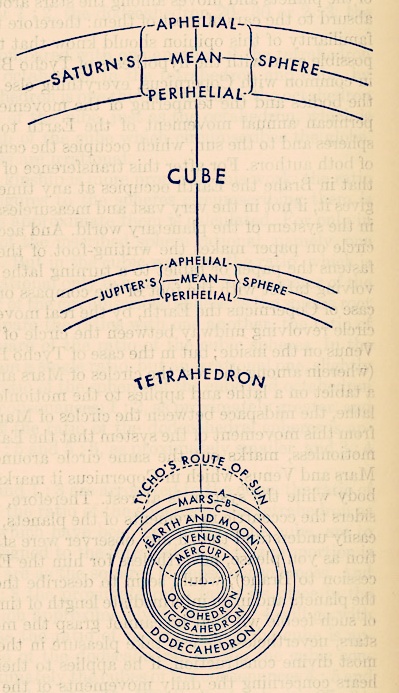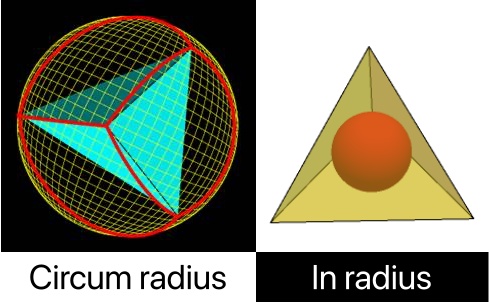Today we will discuss Johannes Kepler, the scientist best known for his Laws of Planetary Motion.
In the Hindi movie ‘OMG,’ Kanjibhai (an atheist) sues God after his “antique” shop is destroyed by an earthquake, and the insurance company refuses his claim because the quake was “an act of God.”

Kanjibhai decides to file a case against God on the premise that if God is responsible for his loss, as has been made amply clear by the insurance company, then it is God’s responsibility to compensate him for his losses. In doing so, he raises pertinent questions around the monetization of religion and businesses in the name of God. He exposes the practices of ‘God-men.’ His popularity rises and raises the concerns of those in the religious industry. Later, when Kanjibhai is hospitalized, the same ‘God-men’ plays a trick by deifying Kanjibhai, erecting his statues, proclaiming him to be an incarnation of God; they proceed to collect donations in Kanjibhai’s name. Co-opting the opposer’s ideas, and subverting them, is a shrewdest trick in humans.
Cut back to late sixteenth-century Europe. Copernican observations had begun to shake the geocentric world idea (Earth being at the center, Sun and the planets revolving around it). Significant because geocentrism was a vital part of church theology. The establishment came in with the usual dismissal and denial of those ideas. However, by the next few decades, Galileo began his work, most scientists and philosophers moved towards a position of Heliocentrism (the Sun at the center and the Earth with other planets revolving around it). The church vociferously opposed such ideas, with threats of ex-communication and heresy. However, in the background, the process of co-opting had already begun.

Kepler was one key actor in this process; of reconciling Heliocentrism with passages from the Bible. With the Sun as the ‘father,’ a celestial sphere consisting of the planets as the ‘son.’ The space between them as the ‘holy spirit,’ he saw the universe in the image of the biblical God. Kepler’s ideas gave birth to his first manuscript ‘Mysterium Cosmographicum’ in 1596.
If you are appealing to some kind of ‘divine’ in your theory, then your explanation of the thesis must have sublime elements of divinity. Kepler searched for a sense of design, perfection in his ideas. He found his spiritual guidance in the ‘Platonic forms.’ Kepler claimed to have had an epiphany about Platonic Solids.
Platonic Solids
Let us explore what these ‘Platonic forms’ are. Geometrically defined, a Platonic solid is a three-dimensional object termed a regular polyhedron. It is constructed by having all the faces congruent (identical in shape and size) with the same number of faces meeting at each vertex.
Euclid and others have given elaborate arguments and have come to the conclusion that only five Platonic solids are possible; Tetrahedron (4 faces), Hexahedron (6 faces), Octahedron (8 faces), Dodecahedron (12 faces), and Icosahedron (20 faces)

Plato associated these solids with the four elements; earth (cube), air (Octahedron), water (Icosahedron), and fire (tetrahedron). The association was intuitive; heat from fire feels sharp and hence was associated with the pointy tetrahedron. Contrast this with the Octahedron; so smooth that one can barely feel it, like air. Water like an icosahedron flows out one’s hand when picked up. The cubes (hexahedrons) are clumsy; they crumble into dirt when picked up, like earth.
Now, whether we like or agree with these associations or not, undoubtedly, one Platonic solid is missing, the 12 faced Dodecahedron. To find a spiritual place for the Dodecahedron, Plato remarked, ‘God used the 12 faced solid for arranging the constellations on the heaven.’
Taking a leaf out of this ‘divinity’ idea, Kepler decided to relate the known planets at his time ( 6 Planets) with the five Platonic solids.
In the manuscript that we discussed, ‘Mysterium Cosmographicum,’
Kepler formalized a sphere that represented the orbit of the outermost known planet ‘Saturn.’ Within this sphere, he drew concentric spheres representing the orbits of each of the known planets. In the gap between concentric spheres, he could fit precisely one of the Platonic solids. Six know planet orbital spheres gave him five spaces, wherein he could fit in each of the five divine solids, revealing the divine design of a Heliocentric universe.

The 3D design of Kepler’s planetary model of the solar system looks as follows:

Once he had completed his ‘divine’ design, what did he proceed to do with it?
Since those concentric spheres resembled bowls, he proposed making a drink dispenser using his design. Each bowl will contain the liquor based on the attributes of the portion of the solar system it represented. For example, the innermost bowl (sphere) with the Sun at its center, filling space till the orbit of Mercury, got a strong distilled liquor representing the Sun’s strength flowing out from the center. In the next sphere, Brandy flowed out from Mercury, Venus dispensed the Mead outward towards Earth. Everything obviously flowed to Earth and nothing outward or inward from it. Thus, Mars had to ship Vermouth inward towards Earth.
Similarly, White Wine flowed inward from Jupiter. And finally, Saturn, the planet of old age and hard lessons, would pour sour beer or corked old wine inward. Yes, you guessed it right, the design was biblical, and the drink choice was astrological. (Later on, Kepler became an astrological advisor to the Holy Roman Emperor Rudolf )
Kepler proposed to make his design in Silver and Gold and approached various Dukes and elites for funding. The folklore is that he got funding, but to keep his design ‘a secret,’ he outsourced the work to different jewelers giving them portions of the design. Later he intended to assemble it himself.
The design never came to fruition, and one planet always played havoc with his plans. That planet was Mars. His invention could never reconcile the observations of the orbit of Mars.
Plus, the design had an Achilles heel. What if we discovered another planet? Kepler had utilized all the Platonic solids; a new Planet would require a new Solid. Euclidean geometry and later day Descartes theorems show that a maximum of Five Platonic Solids are possible. Neptune’s discovery in 1846 would render the design obsolete.
However, even before Neptune’s discovery, Kepler struggled to reconcile his observations of the orbits and his model.

His efforts to reconcile and continuous work on it in the early seventeenth century culminated in 1604, with Kepler’s law of planetary motion. He couldn’t, and more importantly, Kepler didn’t deny the mathematics of the observations staring at him. After 40 failed calculations ranging from circular to egg-shaped orbits, his 41st calculation led him to ‘the ellipse.’ His observations, the geometry, the calculations finally matched. The laws that followed Kepler’s deliberations are famous today as “Kepler’s laws of Planetary Motion.”

And, What happened to the Drink Dispenser Design? Well, interestingly, Kepler never abandoned it. Twenty Five years after his first publication, Kepler came out with a second edition. He was obsessed with trying to fit the Platonic Solid Space – Sphere Orbit design; now, he created the layout using the two radii (Major and Minor) of an ellipse, trying on some kind on an average radius.
That also did not work, below are the values of the average radial distance between the planets in Astronomical Units ( 1AU approximately equals 1.496e+8 km, the average orbit radius of Earth)
| Planet | Distance (AU) |
| Mercury | 0.39528 |
| Venus | 0.72335 |
| Earth | 1.00000 |
| Mars | 1.53031 |
| Jupiter | 5.20946 |
| Saturn | 9.55105 |
The Platonic Solids that fit between these orbits will have fixed circumradius and inradius. In his modified design, Kepler had an Octahedron between Mercury and Venus.


If the design was consistent, then the planetary distance ratio would match the ratio of the radii of the Platonic Solids

Close, but not close enough.
However, the exciting bit is Kepler’s continued belief in the theory of Platonic Forms. His quest to reconcile the biblical passages to his scientific and mathematical observations. The quest to find God’s pattern. Can we call him a scientist? A person who always tried to mold his mathematical and astronomical calculations to suit his theology, to suit his astrology ideas, a revisionist, can he be called a scientist?
Analyzed in terms of Thomas Kuhn (Structure of Scientific Revolutions), Keplar is an ultimate ‘expression’ of what it means to be a scientist. Kuhn’s argument is that Science progresses on paradigms, wherein the presence of a paradigm is more important than its accuracy. The paradigm serves as a guiding tool for researchers to test the paradigm, to prove and re-prove the paradigm. Real scientific progress occurs when the weight of evidence falls against the paradigm, and it becomes evident that a paradigm shift should occur. According to Kuhn, this process takes generations because people are wedded to their paradigms, and they ridicule and resist anything new by nature. Kepler completed the journey of ages in a single lifetime. He set the paradigm of Platonic Solids and circular orbits. Kepler’s own calculations fell foul of his own paradigm. He accepted the evidence in front of him and made a paradigm shift. Keplar’s laws contributed immensely to astronomy, understanding of the solar system, and significantly ending the debate on a Geocentric world.
So what, as a romantic, he still held on to one of his ideas on divine Platonic solids. Kepler never followed them blindly, never imposed them on others, never tried to subvert data to suit himself. Most crucially, Kepler dared to accept and correct his own mistake.
| References |
|













Interesting Read. You should bring more such topics, sucess/failures of the scientists. It is genuinely interesting to read what dilemma science and religion would have caused him.
Surely, will try !
NICE INFO BRO